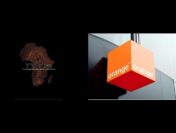According to a recent research, the Arab online population is growing faster than that of online Arabic content, creating a gap that needs to be filled and prospects that local entrepreneurs are looking to grab.
The research carried out by BECO Capital, a regional venture capital firm stated that boosting online Arabic content, combined with the rising digital advertising sector which is expected to grow 347% by 2018, will allow for the creation of sizeable content businesses and present attractive opportunities to venture capitalists in the region.
“This presents huge opportunities for Arabic online publishers of content across industry sectors, whether the content represents data, video, music, infographics or other. These publishers will be able to create strong businesses with innovative revenue streams. Venture capital will also be there to back these businesses with growth capital and operational support in order to help them scale,” commented Amir Farha, Co-Founder and Managing Partner, BECO Capital.
The industry has seen the emergence of new success stories across many of these industries, such as UTurn in Saudi Arabia, Shahiya in Lebanon, Al Tibbi in Jordan, Diwanee and 7awi in Dubai, and Nabd in Kuwait. Some of these companies have already been acquired and others have taken on venture capital. The ecosystem expects more success stories to emerge in the coming years.
Currently, the Internet demands even more quality content in Arabic for the current 141 million online users who speak the language. At the moment, Arabic is the seventh-most popular language on the web, but less than one per cent of all online content is in Arabic, and less than 0.2% of global digital content is hosted in the Arab region, although native Arabic speakers represent about 4.5% of the world population, the report furthur stated.
“The projections for stronger digital Arabic content are inspiring. All the data on demographics and digital sector point to one direction; an upward trend. To achieve this, Arabic content publishers should first be able to put together admired, homegrown scalable businesses that can be monetised. Investors are already looking closely at what the regional pioneers in this space are doing,” explained Mr Farha.
40% of people in the Middle East have internet access, 87 % of them at home. KSA and UAE users in particular spend a total of seven to eight hours online every day, five hours on their desktop and three hours on their mobile. Half the population is under 25, the main age group for internet use on phones and tablets. Young people are increasingly seeking original regional content as opposed to international content that has been repackaged for the region. The new generation’s preference for Arabic content greatly outweighs that for English.





